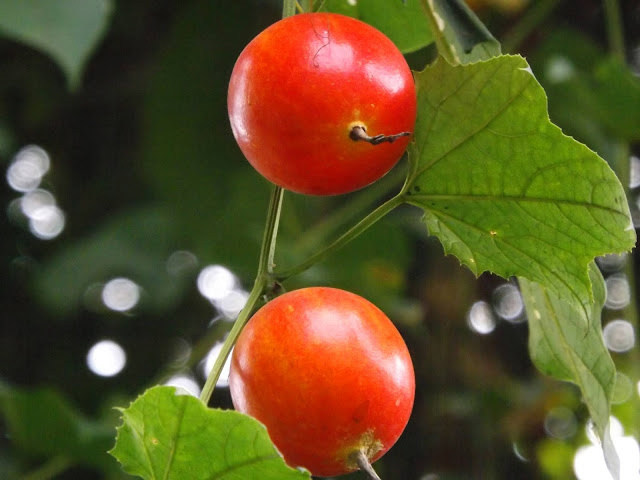Kajubadam or Cashew nut, Anacardium occidentale
Kajubadam or Cashew nut (Anacardium occidentale, family: Anacardiaceae) is an evergreen medium-sized (30-40 feet) leafy tree with spreading branches. Stem is crooked. It is not indigenous in Bangladesh, though it has been planted in different parts of the country.
Other names: Kaju, Hijli badam.
Leaves are simple, green, 10-18 cm long and 6-10 cm wide, obovate, rough, entire, round at he end and narrow at the base. Flowers are small, yellowish brown, on terminal inflorescence. each cluster contains 400-1200 tiny flowers. Flower blooms in April-May.
Male and bisexual flowers can be seen in a tree. Fruits are born from the bisexual flowers. Fruit is nutty drupe, kidney-shaped, about 2.5 cm long, grey, with hard cover. Immatures fruits are green, turns yellow and red when ripe. Seeds are found naked below the hanging fruits. Propagation is caused by sees and air layering.
It is cultivated for its fruits. Ripe fruit is juicy and tastes good. It is commercially cultivated in India, East Africa, Brazil, Sri Lanka, Malaysia and Indonesia. However, the plant is brought by Portuguese in Indian subcontinent almost 400 years ago and they planted it on the shore of South India. Nut is nutritious, purgative and energizing. A kind of liquor is made from the fruit. Bark adhesive is used to pest eradication and to bind books. Ink can be made from this too. Seed oil is preventive of leprosy, worm and rheumatism.






আমি খোসাযুক্ত তাজা কাজু বাদাম কিনতে চাই চারা তৈরী করার জন্য। আপনারা বিক্রি করেন???
ReplyDeleteযোগাযোগ : 01752118660
আমি খোসাযুক্ত তাজা কাজু বাদাম কিনতে চাই চারা তৈরী করার জন্য। আপনারা বিক্রি করেন???
ReplyDeleteযোগাযোগ : 01752118660